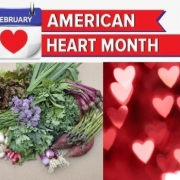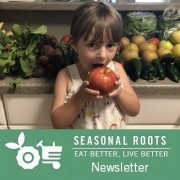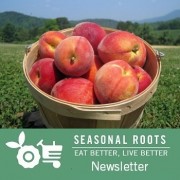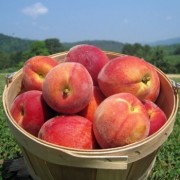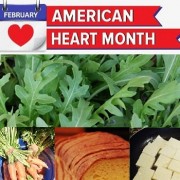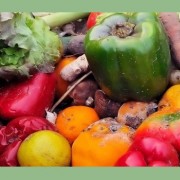Tomatoes vs Squirrels and Other Garden Foes
Spoiler Alert: The squirrels won
A Seasonal Roots staffer tells her story:
This is a story of tomatoes vs squirrels. It’s a sad story. But it has a suprise happy ending, so read on!
I grew up eating fresh-from-the-garden tomatoes. Biting into that sun-filled explosion of fully ripened flavor was one of the great joys of my childhood summers. So delicious!
But then I grew up and life got busy. I tried to keep a garden going but, you know — kids, work, traveling for work… I stopped gardening for a long time. At the grocery store, I’d always try to find the best tomatoes I could, but those homegrown, vine-ripened tomatoes of my youth had ruined me. Grocery store tomatoes looked beautiful but they just tasted like pale imitations of the real thing.
So I finally got back to gardening several years ago. I turned the soil, added compost, planted my seedlings, watered, and nutured. The tomato blossoms came, then the first hard green fruits that slowly grew bigger and began to turn a teasing shade of almost-red. I could practically taste them. Little did I know.
The squirrels were lying in wait.
Not just any squirrels. These were greedy squirrels. Ferocious squirrels. Greedy, ferocious, tomato-loving monster squirrels. And cruel! Sometimes they’d spot a tomato when it was about two seconds shy of being fully ripe and take a big bite out of it. But just one bite. Just enough to spoil it for anyone else. Other times they’d carry off their booty and leave a mangled, blood-red mess of a veggie massacre. They’d sit up in the trees and laugh.
I tried netting. More netting. Netting on top of netting. So much netting that I’d wind up tangled in it like a mummy. But not the squirrels. They came and went in that netted fortress like it had a revolving door.
I tried putting the fear of fake owls in them. They knew no fear. Even my three dogs got nothing for their squirrel-chasing efforts but a scolding from the fearless tomato bandits.
I should have put up a marquee over my garden and sold tickets: BIG FIGHT TONIGHT! TOMATOES VS SQUIRRELS! And don’t get me started on slugs, kale-devouring caterpillars, those worms that rot your squashes just before they’re ripe… my gardening Enemies List is long.
But now that I’m with Seasonal Roots, all my gardening woes are solved. When tomatoes are in season, whether they come from the field or the greenhouse, I get to enjoy that mouthwatering burst of vine-ripened tomato goodness with every order. Yum.
As for the squirrels, they’re now raiding the bird feeder. But that’s another story.
Leslie
Seasonal Roots Marketing Maven
ABOUT SEASONAL ROOTS
Since 2011, Seasonal Roots’ online farmers market has connected Virginia families with local family farmers who use sustainable, humane practices. Our neighborhood market managers – who believe in living better through scrumptious, healthy eating, being kind to animals, protecting the environment, and spreading joy – home-deliver freshly harvested produce, pastured eggs, grassfed dairy and meat, plus artisan fare. We empower our members to eat better and live better with more nutritious, flavorful food that’s good for us and good for the planet. More info at seasonalroots.com.

